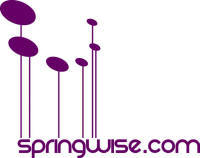 Although I had noticed a new supermarket in Lamb’s Conduit Street passing by on My first ride on a ‘Boris Bike’. I hadn’t realised it was a revolutionary, shopper owned and supported cooperative until I saw it featured in my Springwise newsletter.
Although I had noticed a new supermarket in Lamb’s Conduit Street passing by on My first ride on a ‘Boris Bike’. I hadn’t realised it was a revolutionary, shopper owned and supported cooperative until I saw it featured in my Springwise newsletter.
Though the first food co-op opened in the UK back in 1844, according to Google, such cooperatives have not been a familiar sight in Europe in recent years, despite a certain popularity in the United States. Until now, that is. In fact, with the recent launch of the People’s Supermarket, Londoners recently gained a new place to find affordable food.
Only members can shop at the People’s Supermarket, but they all get a 10 percent discount on prices as well as a say in how the store is run. In exchange, members pay an annual membership fee of GBP 25, and they also pledge to volunteer four hours of their time per month working as store staff. Because the supermarket’s workforce is nearly all volunteers, staff costs are kept low this way — an advantage that can be passed on in lower prices. Any profits that are earned, meanwhile, get put back into the store to bring down prices even further.
Food co-ops are not uncommon in the US, but it’s interesting to see their reemergence in the UK following a bout of unusually tough times. Could this be the beginning of a widespread comeback…?
http://www.springwise.com
The People’s Supermarket – Identity Designed is a showcase and forum for those involved in the design of brand identities.
Time Out says:
We’ve followed the slow and steady success of The People’s Supermarket, a carrot-packed co-operative outlet in Bloomsbury. Fighting off Tesco for a site in one of London’s most independently spirited neighbourhoods, The People’s Supermarket is a project close to the heart of celeb chef Arthur Potts-Dawson and ex-Marks & Spencer executive Kate Wickes-Bull.
The duo have rallied the local community into buying into the scheme – literally. Although anyone can shop at the store, full membership (which scores you a 10 per cent discount and a say in how the shop is run) will cost you £25 and four hours per month working in the store. What you get is fresh, locally sourced (when possible) supermarket fare, dirt cheap and airfreight free; new jobs for locals; and all profits going back into the business. For its founders, this is the beginning of a retail revolution – but for us, it’s a genuine alternative to the major supermarkets aggressively taking over our streets.
Only members can shop at the People’s Supermarket, but they all get a 10 percent discount on prices as well as a say in how the store is run. In exchange, members pay an annual membership fee of GBP 25, and they also pledge to volunteer four hours of their time per month working as store staff. Because the supermarket’s workforce is nearly all volunteers, staff costs are kept low this way — an advantage that can be passed on in lower prices. Any profits that are earned, meanwhile, get put back into the store to bring down prices even further.
Food co-ops are not uncommon in the US, but it’s interesting to see their reemergence in the UK following a bout of unusually tough times. Could this be the beginning of a widespread comeback…? (Related: Sustainable urban campground to be crowd-funded & managed — Crowdfunded breweries.)
Website: www.thepeoplessupermarket.org
Contact: info@thepeoplessupermarket.org












